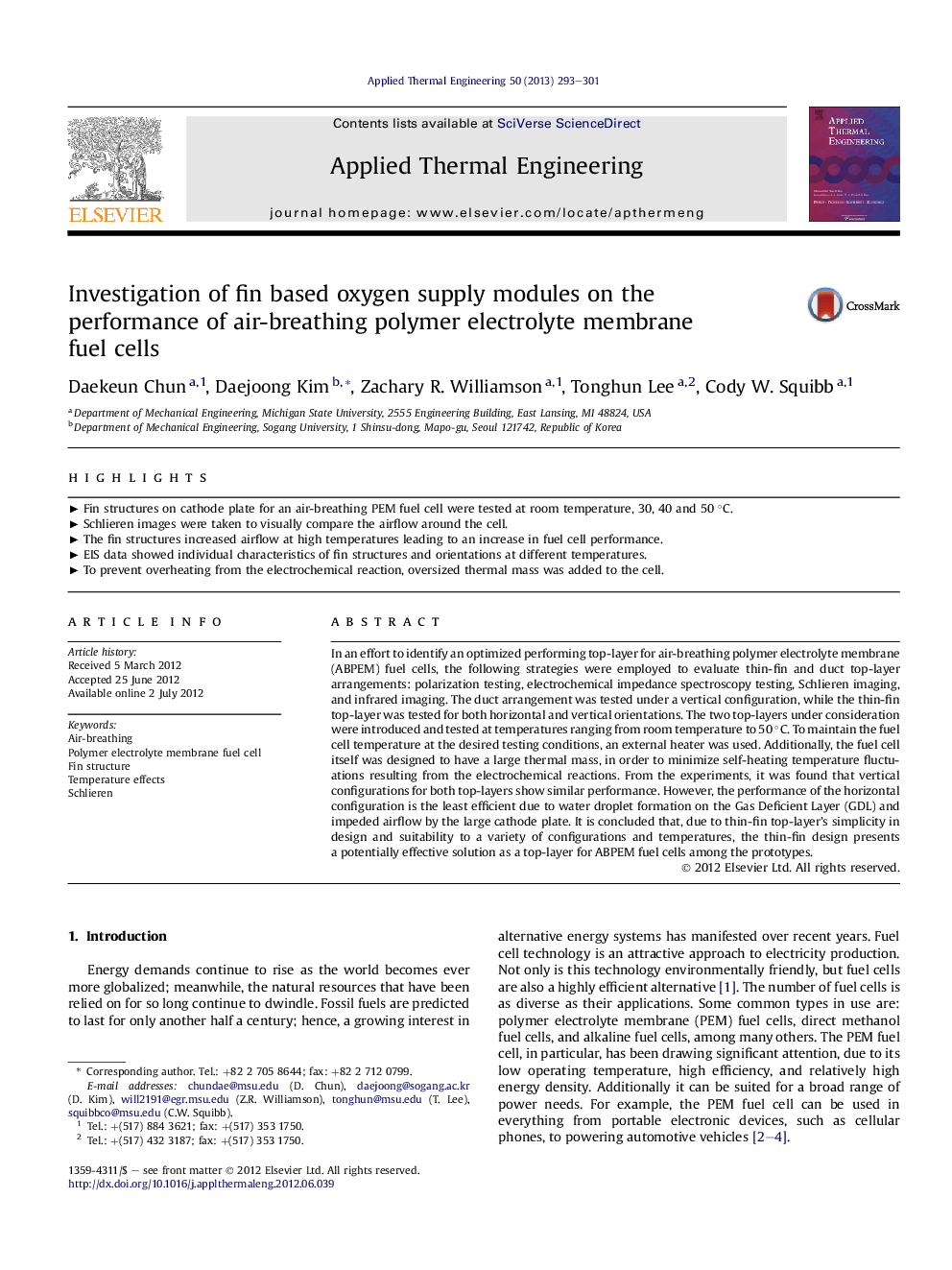| کد مقاله | کد نشریه | سال انتشار | مقاله انگلیسی | نسخه تمام متن |
|---|---|---|---|---|
| 647243 | 884588 | 2013 | 9 صفحه PDF | دانلود رایگان |

In an effort to identify an optimized performing top-layer for air-breathing polymer electrolyte membrane (ABPEM) fuel cells, the following strategies were employed to evaluate thin-fin and duct top-layer arrangements: polarization testing, electrochemical impedance spectroscopy testing, Schlieren imaging, and infrared imaging. The duct arrangement was tested under a vertical configuration, while the thin-fin top-layer was tested for both horizontal and vertical orientations. The two top-layers under consideration were introduced and tested at temperatures ranging from room temperature to 50 °C. To maintain the fuel cell temperature at the desired testing conditions, an external heater was used. Additionally, the fuel cell itself was designed to have a large thermal mass, in order to minimize self-heating temperature fluctuations resulting from the electrochemical reactions. From the experiments, it was found that vertical configurations for both top-layers show similar performance. However, the performance of the horizontal configuration is the least efficient due to water droplet formation on the Gas Deficient Layer (GDL) and impeded airflow by the large cathode plate. It is concluded that, due to thin-fin top-layer’s simplicity in design and suitability to a variety of configurations and temperatures, the thin-fin design presents a potentially effective solution as a top-layer for ABPEM fuel cells among the prototypes.
► Fin structures on cathode plate for an air-breathing PEM fuel cell were tested at room temperature, 30, 40 and 50 °C.
► Schlieren images were taken to visually compare the airflow around the cell.
► The fin structures increased airflow at high temperatures leading to an increase in fuel cell performance.
► EIS data showed individual characteristics of fin structures and orientations at different temperatures.
► To prevent overheating from the electrochemical reaction, oversized thermal mass was added to the cell.
Journal: Applied Thermal Engineering - Volume 50, Issue 1, 10 January 2013, Pages 293–301